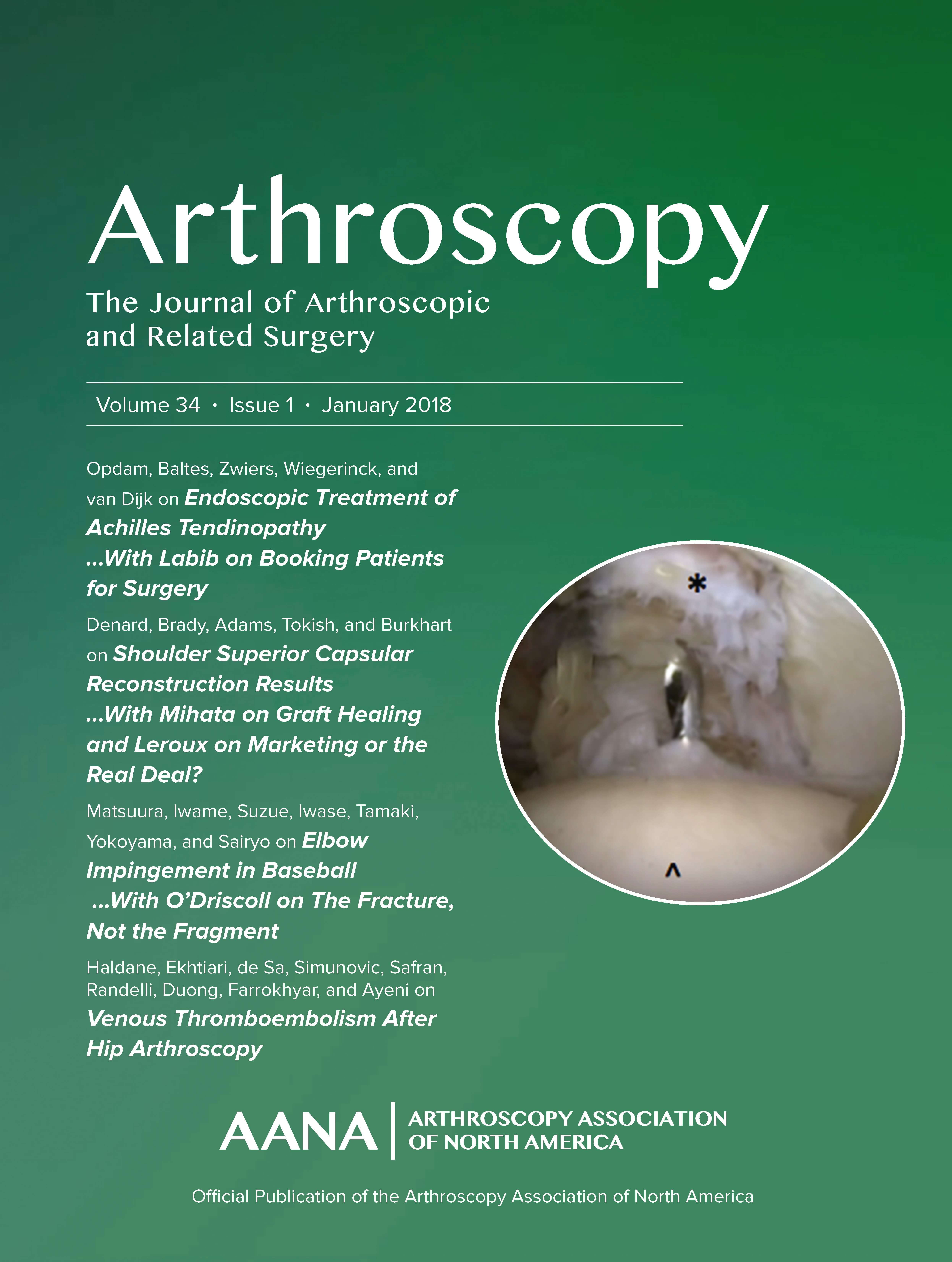
Anterior Shoulder Dislocation: Open repair effective in reducing recurrence rates

Anterior Shoulder Dislocation: Open repair effective in reducing recurrence rates
Primary Repair Versus Conservative Treatment of First-Time Traumatic Anterior Dislocation of the Shoulder: A Randomized Study With 10-Year Follow-up
Arthroscopy. 2007 Feb;23(2):118-23.Did you know you're eligible to earn 0.5 CME credits for reading this report? Click Here
Synopsis
76 patients with first-time traumatic anterior dislocation of the shoulder joint were randomized to either receive open Bankart surgical repair, or conservative treatment. This study aimed to compare rates of recurrence between treatments. The results at both the two year and ten year follow up periods indicated that open repair reduced the recurrence rate of shoulder dislocations in comparison to conservative treatment.
Was the allocation sequence adequately generated?
Was allocation adequately concealed?
Blinding Treatment Providers: Was knowledge of the allocated interventions adequately prevented?
Blinding Outcome Assessors: Was knowledge of the allocated interventions adequately prevented?
Blinding Patients: Was knowledge of the allocated interventions adequately prevented?
Was loss to follow-up (missing outcome data) infrequent?
Are reports of the study free of suggestion of selective outcome reporting?
Were outcomes objective, patient-important and assessed in a manner to limit bias (ie. duplicate assessors, Independent assessors)?
Was the sample size sufficiently large to assure a balance of prognosis and sufficiently large number of outcome events?
Was investigator expertise/experience with both treatment and control techniques likely the same (ie.were criteria for surgeon participation/expertise provided)?
Yes = 1
Uncertain = 0.5
Not Relevant = 0
No = 0
The Reporting Criteria Assessment evaluates the transparency with which authors report the methodological and trial characteristics of the trial within the publication. The assessment is divided into five categories which are presented below.
1/4
Randomization
2/4
Outcome Measurements
3/4
Inclusion / Exclusion
4/4
Therapy Description
3/4
Statistics
Detsky AS, Naylor CD, O'Rourke K, McGeer AJ, L'Abbé KA. J Clin Epidemiol. 1992;45:255-65
The Fragility Index is a tool that aids in the interpretation of significant findings, providing a measure of strength for a result. The Fragility Index represents the number of consecutive events that need to be added to a dichotomous outcome to make the finding no longer significant. A small number represents a weaker finding and a large number represents a stronger finding.
Why was this study needed now?
Dislocations of the shoulder joint are the most frequent type of dislocations in the body. With traumatic anterior dislocation, there is a high risk recurrence; however, it is still uncertain if surgical repair of Bankart lesions produces a significant reduction in recurrence compared to conservative treatment. Recurrent instability of the shoulder joint can negatively affect one's performance in daily activities as well as sports. This study is of importance, as there have been few long-term, high quality studies looking at surgical versus conservative treatments.
What was the principal research question?
Does open Bankart surgical repair of lesions reduce the rate of recurrence of dislocations, as compared to conservative treatment, in patients with traumatic anterior shoulder dislocations, over a ten year follow up period?
What were the important findings?
- At the two year follow up period, 1 of 37 (2.7%) in the Open Bankart repair group had a recurrent anterior dislocation whereas this was present in 21 of 39 (53.8%) of those in the non-surgical group (p=0.0011). All of these patients who had re-dislocations had Baker type 2 or 3 lesions.
- No significant difference was seen in remaining non-dislocators between both groups with respect to Constant scores.
- Of the 36 patients in the Bankart repair group without dislocations, 7% had positive apprehension test, and 4% had a grade 1 load-and-shift test.
- Out of those who did not sustain a redislocation in the nonsurgical group, 39% had a positive apprehension test, and 39% had a grade 1 or 2 load-and-shift test.
- 80% with Type 2 lesions, and 53% with Type 3 lesions (in nonsurgical group) sustained a recurrence within two years following trauma.
- At the ten year follow up period (completed telephone interview and questionnaire), 9% of patients in repair group had recurrent dislocation. When grading was completed using the Oxford Shoulder Score, 53% had excellent results and 17% had good results.
- In the nonsurgical group, 62% patients sustained recurrent anterior dislocation. 74% had unsatisfactory results due to instability or pain (Oxford scale) at the ten year follow up period.
What should I remember most?
Open Bankart repair as treatment for anterior dislocations of the shoulder joint, yielded lower rates of recurrence, as compared to conservative treatment. These results were seen at both the two year and ten year follow up periods.
How will this affect the care of my patients?
The results of this study indicated that open repair was a more effective treatment as compared to a conservative method in reducing rate of redislocation, in a population of young individuals with anterior shoulder dislocation.
Learn about our AI Driven
High Impact Search Feature
Our AI driven High Impact metric calculates the impact an article will have by considering both the publishing journal and the content of the article itself. Built using the latest advances in natural language processing, OE High Impact predicts an article’s future number of citations better than impact factor alone.
Continue



 LOGIN
LOGIN

Join the Conversation
Please Login or Join to leave comments.